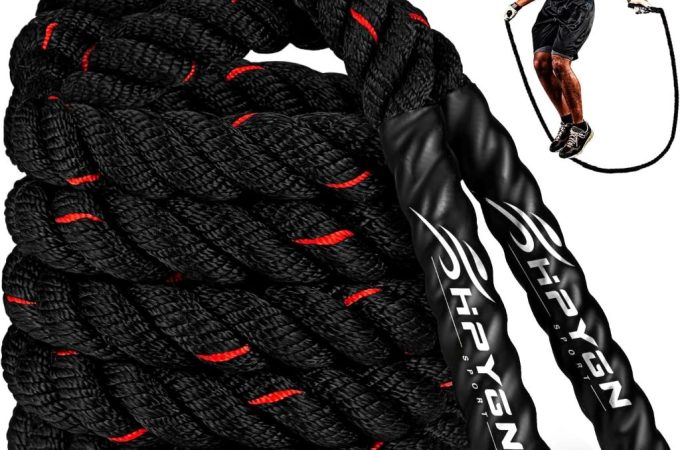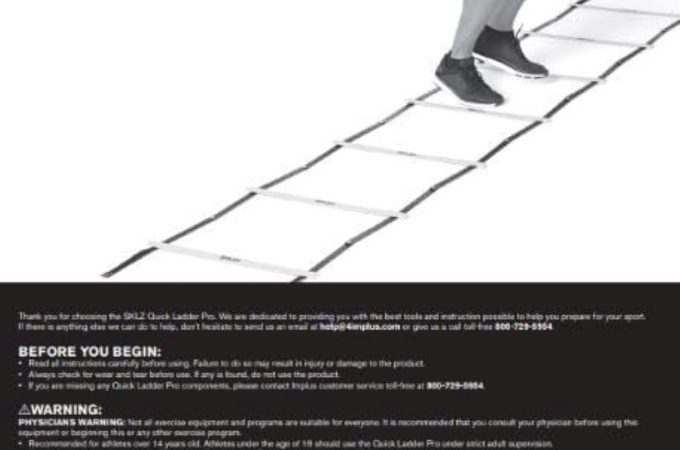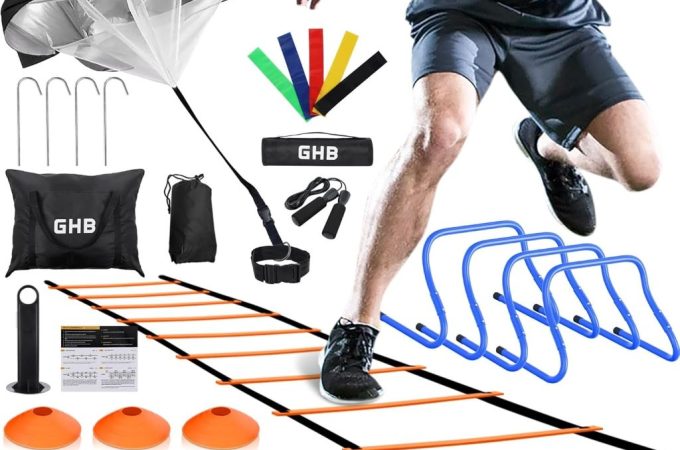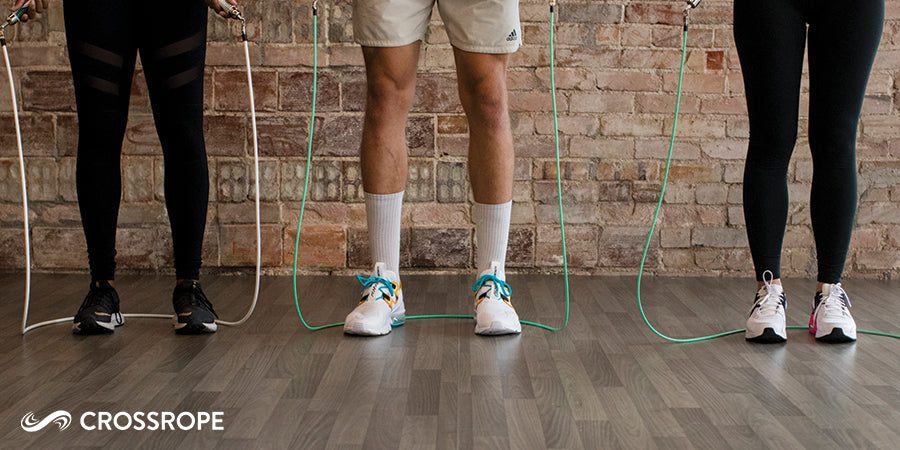
How to Choose a Jump Rope: Ultimate Guide to Perfect Speed
To choose a jump rope, consider its length, handle design, and cable weight appropriate for your height and skill level. Ensure the rope’s material suits your workout surface.
Contents at a Glance
ToggleJump ropes, a timeless tool for fitness enthusiasts, have evolved into sophisticated equipment tailored for various workouts and skill sets. Selecting the right jump rope can significantly enhance your exercise routine, whether you aim for speed, agility, strength, or endurance.
A well-chosen jump rope can help avoid injuries, improve coordination, and increase the effectiveness of your cardio workouts. The length of the rope is critical, as it must correspond to your height to allow for smooth and efficient movement. Handle design plays a significant role in grip and comfort, influencing your performance during extended sessions. Cable weight impacts the intensity of your workout; a heavier rope amps up the challenge, while a lighter one promotes speed and quick maneuvers. Choosing the appropriate material ensures durability and longevity, helping you make the most of your fitness investment. Keep these factors in mind to jump-start your journey toward a more engaging and rewarding jump rope experience.
Jump Rope Selection For Speed Training
Elevate your cardio workout and shred calories with the swift art of speed jumping. Fast-paced and demanding, speed training with a jump rope can elevate your cardiovascular fitness, coordination, and agility. To harness the full benefits, however, selecting the right jump rope is crucial. Below we’ll explore the pivotal factors in choosing a jump rope aimed for rapid revolutions and optimized for your velocity training sessions.
Key Considerations For Selecting A Jump Rope
To achieve top-notch speed training sessions, it’s essential to invest in a jump rope that meets the following criteria:
- Handle Design: Seek handles that are lightweight and ergonomically shaped for a firm, comfortable grip that won’t slip when you’re picking up pace.
- Bearing System: A smooth and high-quality bearing system is vital for effortless rope rotation and maximum revolutions per minute.
- Weight: Opt for a lighter rope that will provide swift movement without sacrificing control and precision.
- Adjustability: A rope with adjustable length ensures a customized fit, vital for efficient speed training.
Importance Of Rope Length And Personal Height
Your jump rope’s length is paramount in dictating the efficiency of your training. The rule of thumb is to choose a rope that reaches nearly shoulder height when standing on it. Correct rope length correlates to improved rhythm, reduced energy expenditure, and decreased risk of tripping. Use this table to match your height with an ideal rope length:
| Personal Height | Rope Length |
|---|---|
| 4’9″ – 5’3″ | 8 feet |
| 5’4″ – 5’8″ | 9 feet |
| 5’9″ – 6’2″ | 10 feet |
| 6’3″ and taller | 11 feet |
Material Choices And Their Impact On Speed
Jump ropes come in various materials, each affecting speed and performance. Common options include:
- Leather: Durable and traditional, yet typically slower and not ideal for high-speed workouts.
- PVC/Plastic: A prevalent choice for speed ropes due to its lightweight and fast-moving nature.
- Steel Cables: Often used by professionals, coated steel cables are the go-to for top speed, precision, and durability.
- Beaded Ropes: Not the fastest, but the weight of the beads provides a good rhythm, helping beginners establish pace and timing.
Ultimately, a blend of a lightweight, durable material with appropriate length for your height and handles that promote swift rotation will serve best for speed training. Embrace these key attributes for your jump rope selection, and you’re well on your way to an exhilarating speed jumping journey.
Match Your Jump Rope To Training Goals
Finding the right jump rope can be the difference between a frustrating learning experience and a smoothly executed workout. It’s not just about the color or the price; the type of rope you choose should align closely with your training objectives. Whether you’re looking to improve footwork, endurance, or speed, the following considerations will guide you to make an informed decision tailored to your fitness journey.
Differentiating Between Speed Ropes And Freestyle Ropes
Speed ropes and freestyle ropes serve distinct purposes in a workout routine. Speed ropes, designed for high-tempo and competitive speed jumping, have a thin and lightweight wire for cutting through the air faster. In contrast, freestyle ropes have a thicker and more flexible construction, which offers a wider range of movements and tricks for a dynamic workout.
- Speed Ropes: Ideal for cardio workouts, CrossFit, and improving quickness.
- Freestyle Ropes: Suited for complex jump rope routines and freestyle jumping.
Impact Of Handle Design On Jump Rope Performance
The design of jump rope handles can greatly impact your training effectiveness. For longer sessions aimed at endurance, look for ergonomically shaped handles that reduce hand fatigue. If improving reflexes and speed is your goal, opt for handles with a swivel mechanism that allows for smooth rotations and increases turn efficiency.
| Handle Feature | Benefit |
|---|---|
| Ergonomic Shape | Comfort for longer workouts. |
| Swivel Mechanism | Smoother rotations for speed. |
Role Of Rope Weight In Achieving Perfect Speed
Rope weight plays a critical role in the execution of your jumps. A heavier rope increases workout intensity, enhancing strength and endurance. It adds resistance, making it easier to feel the rope and maintain rhythm. In contrast, a lightweight rope allows for quicker turns, fostering speed and agility.
- Lightweight Rope: Enhances speed and coordination.
- Heavy Rope: Builds strength and endurance.
Incorporating Perfect Speed Into Your Routine
Incorporating Perfect Speed into Your Routine is a crucial step for anyone looking to elevate their jump rope performance. Whether you’re a beginner looking to build stamina or an advanced athlete aiming to enhance your footwork, the right speed can be a game-changer. Achieving a flawless rhythm and pace allows for a more efficient workout, ensuring you get the most out of every jump. Let’s dive into how you can master rope speed, sidestep common jumping errors, and tailor your workouts to become a speed rope virtuoso.
Techniques For Mastering Rope Speed
To achieve optimal control and agility, consider these proven techniques:
- Maintain a consistent tempo by syncing your jumps with the beat of the rope. Start slow and gradually increase.
- Use your wrists, not arms, to control the speed. This provides better precision and less fatigue.
- Stay light on your feet by jumping on the balls of your feet, reducing impact and enabling quicker motion.
- Practice interval training with alternating speed bursts to build endurance and speed.
Common Mistakes To Avoid When Striving For High-speed Jumping
Avoid these pitfalls to keep your speed jumps efficient and effective:
- Jumping too high wastes energy and reduces speed. Aim for small, quick hops.
- Overusing arm movements can limit rope control. Focus on wrist action.
- Neglecting core stability leads to a lack of control. Engage your core to maintain form.
- Using the wrong rope length may hinder speed and rhythm. Ensure your rope is the appropriate length for your height.
Customizing Jump Rope Workouts For Speed Improvement
Creating a tailored jump rope routine can significantly boost your speed. Here’s how to customize your workout:
- Identify your baseline by timing how many jumps you can perform at a consistent speed within a minute.
- Set incremental speed goals and track progress.
- Integrate different jump styles, such as high knees and double-unders, to challenge your speed and coordination.
- Regularly mix speed intervals within longer, steady-paced workouts to push your limits without burning out.
How To Choose A Jump Rope: Balancing Cost And Quality
Finding the right jump rope can be a balancing act between cost and quality. Both beginners and seasoned jumpers need to invest in a rope that not only fits within their budget but also stands the test of time. This section will delve into the specifics of what you should look for when selecting a jump rope that offers the best of both worlds.
Assessing Durability Versus The Cost Of Jump Ropes
Selecting a durable jump rope is crucial for a consistent workout experience. Assessing the materials used, such as PVC, steel cables, or leather, will give insight into the longevity you can expect from your investment. Here are some points to consider:
- PVC ropes are affordable and offer a good balance for beginners.
- Steel cables, often coated with polymer, can be slightly pricier but provide a high level of durability and are ideal for speed workouts.
- Leather ropes are typically more expensive and require maintenance, but they offer a traditional jump rope experience.
It’s important to weigh these factors against their price points to make a cost-effective decision without compromising on quality.
Comparing Brand Options For Value For Money
Not all jump ropes are created equal, and brand reputation can often indicate quality. Some brands specialize in ropes for specific uses like speed jumping or freestyle. Others focus on general fitness.
Evaluating each brand’s cost versus the benefits they provide will help you identify the best value for your money.
Seeking Out Reviews And Expert Opinions
One of the best ways to gauge the real-world performance of a jump rope is through customer reviews and expert opinions. Fitness forums, product review sites, and even social media can serve as resources to help you make an informed choice. Look out for comments regarding:
- Overall durability and material quality.
- Handle comfort and grip during long workout sessions.
- Effectiveness in achieving fitness goals.
- Customer service and warranty issues.
Combining this qualitative data with your own needs and preferences will steer you toward a jump rope that offers the best performance for your budget.
Enhancing the Longevity Of Your Jump Rope
Investing in a good jump rope is just the first step on your journey to mastering double-unders or simply enhancing your workout routine. Maintaining the longevity of your jump rope ensures that you get the best value for your purchase and continue to enjoy a consistent performance. Let’s delve into vital care instructions, DIY maintenance tips, and knowing when to renew your jump rope.
Proper care and maintenance of speed ropes
Proper Care And Maintenance For Speed Ropes
To keep your speed rope in top condition, a few simple practices go a long way:
- Keep it clean: Wipe your rope down after each use to remove sweat and oil that can degrade materials.
- Store correctly: Hang your rope in a cool, dry place away from direct sunlight when not in use.
- Avoid abrasive surfaces: Jump on a mat or smooth surface to prevent fraying and wear.
- Check for wear: Regularly inspect your rope, especially at the handles and the points where it contacts the ground.
Simple attentiveness to care can greatly extend the life of your speed rope and promote consistent performance.
DIY quick fixes for common jump rope issues
Diy Quick Fixes For Common Jump Rope Issues
Even with the best care, issues can arise. Here are some quick fixes you can do at home:
| Issue | DIY Solution |
|---|---|
| Frayed Cable | Apply a small amount of electrical tape or heat shrink tubing to the affected area. |
| Loose Handles | Tighten the screws or adjust the caps at the end of the handles. |
| Worn Bearings | Lubricate the bearings with a light oil to keep them moving smoothly. |
| Twisted Rope | Hang the rope straight for a day or gently iron on a low heat setting to remove any kinks. |
These straightforward solutions can help you tackle common problems without needing a replacement.
When to replace your jump rope for optimal performance
When To Replace Your Jump Rope For Optimal Performance
Despite regular maintenance, a jump rope will eventually require replacement. Here’s how to know it’s time:
- Visible Damage: If the rope shows signs of significant fraying or the handles are cracked, it’s time for a new one.
- Performance Issues: When the rope no longer swings smoothly or consistently, it may impact your workout effectiveness.
- Aging Materials: Materials like PVC can become stiff or brittle with age, reducing flexibility and comfort.
Being proactive about replacing your jump rope can prevent workout interruptions and potential injuries.
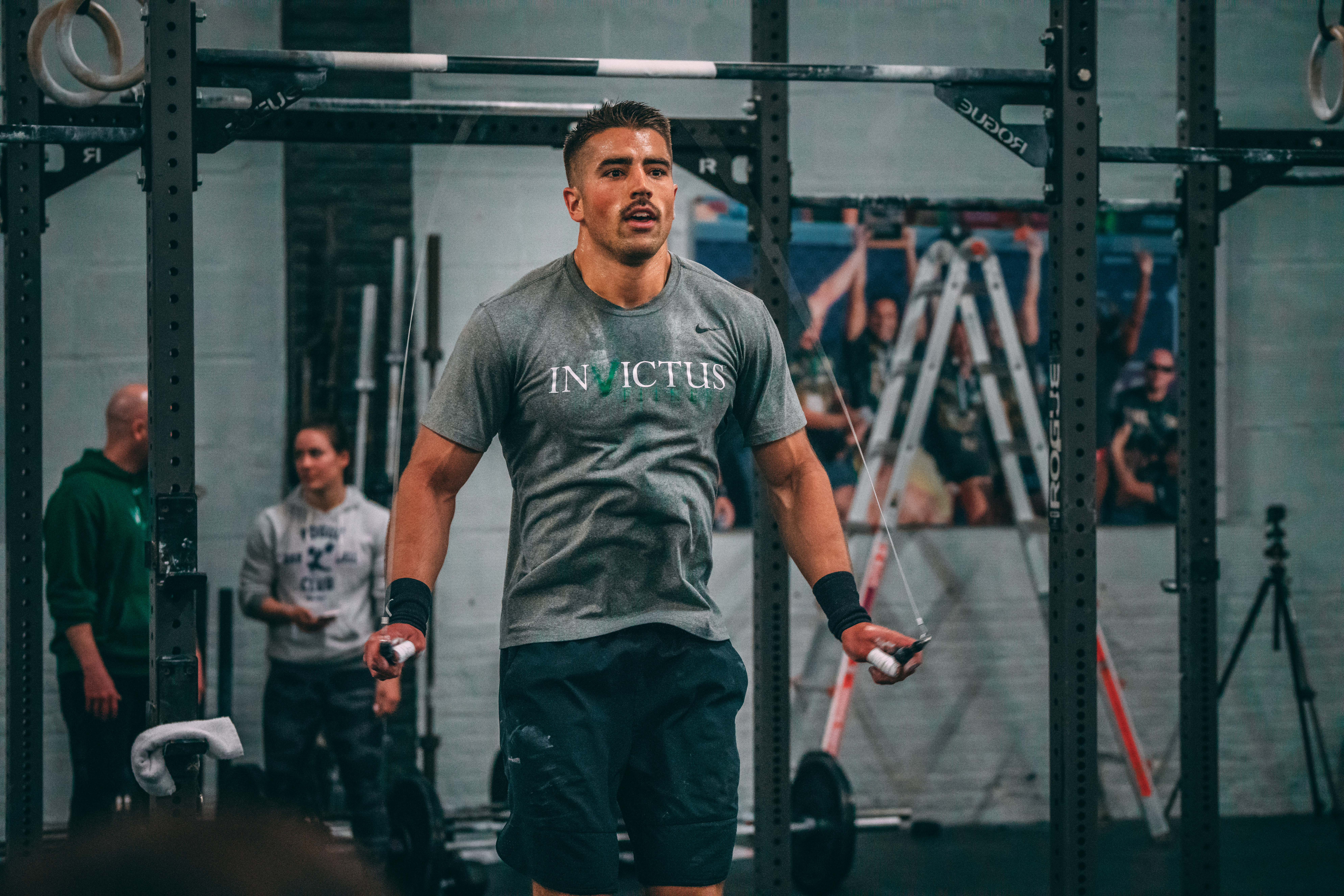
Credit: www.crossfitinvictus.com
Frequently Asked Questions On How To Choose A Jump Rope
What Factors Determine Jump Rope Quality?
High-quality jump ropes are characterized by durable materials, comfortable handles, adjustable length, and a suitable weight for the user. Stainless steel cables and ergonomic grips are common in premium models.
How Do I Choose The Right Jump Rope Length?
For the right jump rope length, stand on the rope’s center and pull the handles up. The tips should reach just under your armpits. Most ropes are adjustable to tailor the length to your height.
Which Jump Rope Is Best For Beginners?
Beginners should opt for a lightweight, foam-grip jump rope with an adjustable length. A PVC or beaded rope can offer the right feedback for learning proper timing and rhythm.
Can Jump Ropes Improve Cardiovascular Fitness?
Yes, jump ropes can significantly enhance cardiovascular fitness. They provide a high-intensity, full-body workout that improves heart health, stamina, and calorie burn.
Conclusion
Selecting the right jump rope can elevate your workout. Consider the material, length, and handle design for optimal performance. Remember, a tailored choice will enhance your fitness journey. Embrace the fun of skipping, and let your perfect jump rope find its way into your daily regime.
Jump in!


